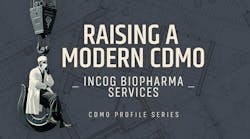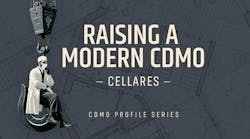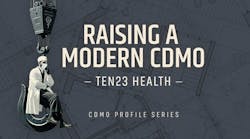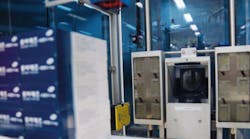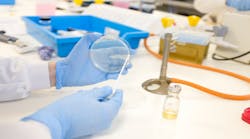Last year, Challenger, Gray & Christmas estimated that the drug industry had cut some 300,000 jobs between 2000 and 2010, with many or most of them in the U.S. and North America. While positions have been created as well, especially in biopharma, it’s safe to say that the U.S. has experienced a significant net loss in drug manufacturing jobs in the past decade.
One could get the impression that pharmaceutical business is fleeing the U.S. to distant shores, setting up shop in China, India, Brazil—anywhere but here. Indeed, those countries are the most rapidly growing markets in the world, and U.S. drug companies are looking to exploit—perhaps in every sense of the word—opportunities abroad and have shifted jobs overseas.
But there is hope that the decade of doom and gloom is behind us. Challenger believes the layoffs are dissipating, and the U.S. Bureau of Labor Statistics says payrolled employees in our sector have remained somewhat stable over the past six months.
And let’s not lose sight of the fact that the U.S. is still the largest pharmaceutical market in the world. Truly global drug companies want to be here—need to be here. I was reminded of this fact at a recent breakfast gathering sponsored by iBIO, the Illinois arm of the Biotechnology Industry Association. The event, “European Pharma in Chicago,” featured speakers from APP Pharmaceuticals (part of Fresenius Kabi), Lundbeck, and Vetter.
The U.S. is a $335 billion market, with Europe a distant second and significantly larger than the $50 billion Chinese industry, noted Michael Rosen, representing the Illinois Science + Technology Park in Skokie, which hosted the meeting. (For film trivia buffs, scenes from “Contagion” were filmed at the Park. A whiteboard still bears the scrawlings of star Kate Winslet.) The recent U.S. healthcare reform will mean an additional 25-30 million new patients over the next five years. “You cannot be a global player without being in the U.S. market,” Rosen said.
The three speakers that followed acknowledged as much. APP’s VP of Innovation and Development, David Bowman, talked about how his company was snatched up by Fresenius so that the German parent company could establish a foothold in U.S. pharma. Via APP, Fresenius is now one of the leading sterile injectable manufacturers in the U.S. (It is the sole U.S. supplier of heparin sodium vials since Baxter exited the market.) “Understanding the markets was the most critical part” for Fresenius, Bowman said. “You can’t use one platform or strategy for the whole world. It doesn’t work.”
“You can’t really have a global presence without a presence in the U.S.,” added Anders Buur, VP of U.S. Drug Development for Lundbeck. Like Fresenius, Denmark’s Lundbeck is tapping the U.S. drug market via acquisition, starting with its purchase of Ovation Pharmaceuticals in 2009. This gave Lundbeck the infrastructure it needed to better sell the likes of Celexa and Lexapro here; in 2010, 26% of the company’s revenue was North American.
“We acquired a company because the expert knowledge of U.S. market and development was there already,” Buur said. “That was a huge difference, and it would have been dangerous for us not to acquire.”
Vetter Pharma took a different route to the U.S. As a CDMO, Vetter typically engages with clients during phase III of development. “There are some 2,000 compounds we are interested in,” said John Moore, its key account manager. “Of those, about half are in the U.S.”
How to get closer to current and potential U.S. clients? Vetter considered acquisition, but decided it was too risky: corporate integration can be tricky, Moore noted, and “failure has consequences.” A second option was to build a green field facility—too much upfront capital and too many years until start-up, he said.
The German company opted for a third alternative—leasing. In just two years, the 24,000-square-foot Vetter Development Service site is now qualified and operating in the Illinois Science + Technology Park. Leasing involved less time and risk. The Vetter site handles clinical manufacturing and lyophilization, though it ultimately transfers products to commercial facilities in Germany.
Interestingly, Vetter’s decision to locate in the Midwest had as much to do with time zones as anything else. Had it located on the West Coast, Moore noted, there would have been no overlap with the standard German workday—“that would have been a real challenge,” he said. As for the East Coast, it was viewed as too far from the West Coast, where many potential biopharma customers reside. Thus, Chicago won out.
Will all this activity result in more manufacturing jobs in the U.S.? Indirectly and directly, yes, it should. For APP, Bowman noted, the acquisition by Fresenius has meant that all sites, including those in Illinois, New York, and North Carolina, are viewed as key “global” manufacturing facilities and more critical to long-term strategy.
Lundbeck’s expanded presence in North America means more business for CMO’s here, Buur noted.
Vetter now has 40 employees in Skokie, Moore said, half “expats” and half locals. Is there potential for commercial manufacture in the U.S.? There are no plans at present, Moore said, “but we would be well-positioned to do that if we wanted to.”
The U.S. is not just an attractive pharmaceutical market but also a good place to establish manufacturing operations. Pass it on.
